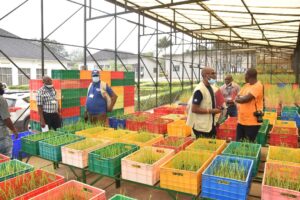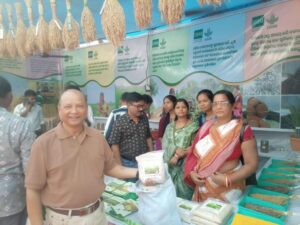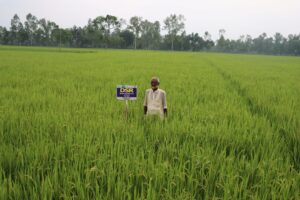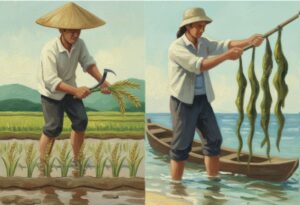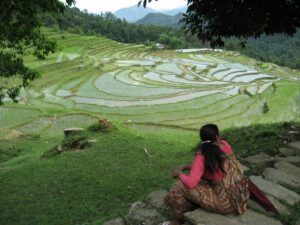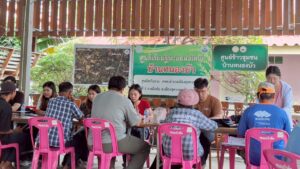By Christian Dohrmann
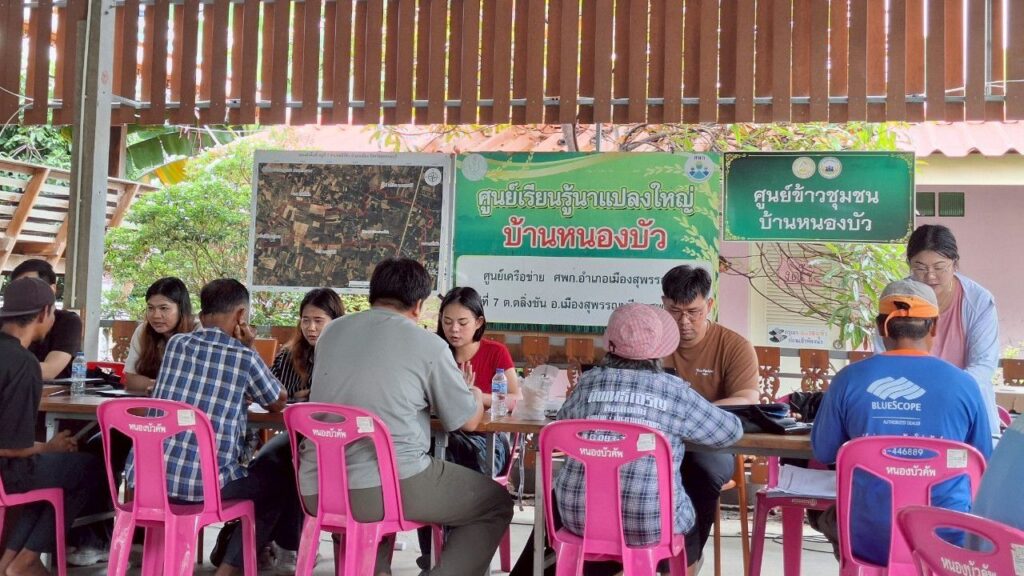
This year, Thailand and the International Rice Research Institute (IRRI) have embarked on a journey toward improving its sustainable rice cultivation practices. The Thai Rice: Strengthening Climate-Smart Rice Farming and the Accelerating the Scaling of Low-Emissions Rice in Southeast Asia projects, among other initiatives, are gaining momentum in the country. As part of this journey, IRRI has conducted household and farm management surveys in seven provinces in the country. Dr. Nittaya Cha-un, Researcher at the Joint Graduate School of Energy and Environment, King Mongkut’s University of Technology Thonburi, serves as our guide through the local rice farming community.
While strategies to change farmer behavior are debated in offices, a different reality unfolds in the paddies. Farmers are aware of changing weather patterns, experiment with ducks for pest control, and recognize that reducing water can improve their yields. Yet when change is formally proposed, opposition emerges.
This contradiction tells of a complex decision-making landscape where survival instincts, cultural wisdom, and social pressures create a pulling and tugging between resistance and adaptation.
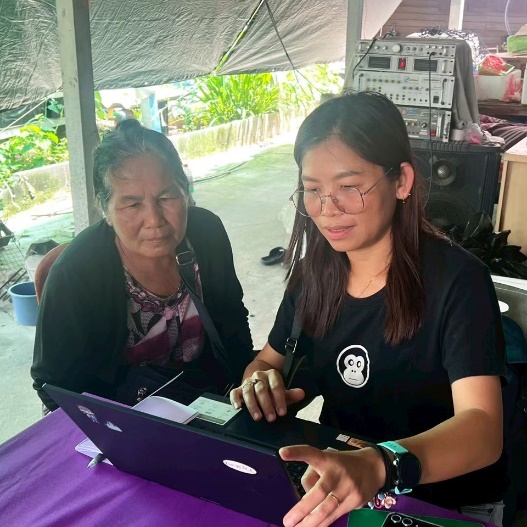
Aware of the weather but not the climate
Nearly all farmers interviewed spoke of unusual weather—rain coming at the wrong time, sudden floods, or severe droughts. These events have affected their farming activities and financial situations. Yet, as Dr. Nittaya notes, “most [farmers] still do not clearly connect these changes to climate change.”
This disconnect becomes understandable when viewed from a farmer’s daily reality. Rice farming has attracted international attention for its methane emissions, far more potent than carbon dioxide. Yet for farmers struggling on marginal profits, the threat of an invisible gas remains irrelevant when trying to feed oneself.
It is always about money – or is it?
Every proposed change in farming is evaluated through the lens of economic impacts where financial anxiety operates like a natural decision filter. Dr. Nittaya explained:
Rice farmers often raise questions like “Will this really work?”, “Who will be responsible if yields drop?”, “Has anyone actually succeeded before?”, or “If we stop burning, who will pay for straw management costs?”
Rice farmers struggle with debt, making it essential to prevent further economic hardships due to uncertain yields. “Farmers prefer low-cost methods rather than investing in new ones. If a practice can reduce costs or increase yields, they are more open to trying it,” Dr. Nittaya clarifies.
This economic focus dominates conversations around sustainable agriculture, typically comparing short-term costs versus long-term benefits. Yet economics is only one side of the story, as farmers also bring wisdom to the table.
Unconscious sustainability experts
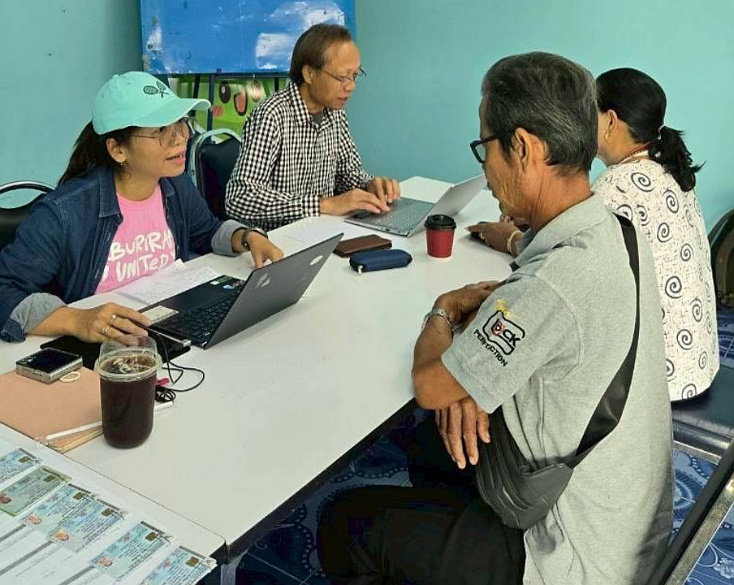
Beneath the surface of economic anxiety lies a wealth of practical knowledge. The survey conversations revealed that many farmers unknowingly describe methods that mirror Alternate Wetting and Drying (AWD) practices. “Keeping water shallow and letting fields dry out sometimes, they noticed that rice plants grew stronger and produced more tillers,” Dr. Nittaya said. “Some also noticed that rice plants growing independently outside the field, without fertilizer or flooding, were just as strong and productive,” she continued.
This observation highlights that non-continuously flooded rice is often being implemented, despite farmers not connecting these methods to formal AWD principles. Notably, it is the older, seasoned farmers who speak of better yields under reduced irrigation, suggesting that decades of sustainable farming knowledge persists through plain pragmatism.
Similar pragmatism emerges in other techniques where farmers use ducks as natural pest killers, employ organic fertilizers, rotate crops for water conservation, or plant soil-enriching hemp. These practices emerged not because of being versed in science but because of the need to reduce costs.
Without trust, there is no change
Exploring community dynamics reveals that the social aspect is a critical factor in agricultural transformation. The dynamics speak of a social landscape where innovation carries both promise and peril.
“Trying new practices yields skepticism as farmers report feeling isolated and under pressure. Their neighbors watch them for success or failure, which leads to fear of being judged,” Dr. Nittaya exemplifies.
Social pressure is an obstacle to adopting different methods as farmers fear becoming the center of judgment. In the case of failure, they even face loss of dignity within their community.
At the same time, this social scrutiny can also accelerate change when adopters succeed. Farmers who are acknowledged for successful practices experience pride and a sense of contribution to their community. The key lies in who delivers the message. As Dr. Nittaya stresses:
“Trust plays a very big role. If an advisor has visited often and built good relationships, farmers are more willing to try than if the advice comes in the form of governmental order. Many farmers listen to local leaders and agricultural extension officers. If these figures support new practices and show visible results, farmers are much more likely to accept them.”
Experimentation is cautiously viewed as disconnected from practical reality, a concern that circles back to economic fears. Local organizations receive a warmer response in that regard, as they are seen as “providing a helping hand rather than ordering change,” as Dr. Nittaya says.
Farmers trust those who live and work within the community and build influence through regular presence and shared experience. This is something distant experts cannot replicate.
Building on intergenerational values
Looking toward the future, the intersection of farmer generations offers a promising outlook for sustainable change. “Younger farmers, especially those with higher education or urban work experience, are more open to technology, such as drones or mobile apps,” Dr. Nittaya observes. Their exposure to different systems and approaches brings fresh energy and technological openness to the field. Early signs appear in entrepreneurial thinking, with young farmers expressing interest “in creating low-carbon brands and participating in carbon markets”, she continued.
Women contribute another valuable perspective. While men typically focus on yield performance, “female farmers emphasize health and safety like reducing chemical use”, Dr. Nittaya notes. They seek methods free from substances that could harm healthy living.
What this experience tells us

Change happens through relationships rather than credentials and authority. Rice farmers are willing to try out different practices if it comes from someone they trust rather than directives from distant offices. Practices presented by officials or researchers outside their credible circle tend to be frowned upon. Sustainable agriculture initiatives should prioritize relationship-building with local leaders—they hold the power to drive change.
When recognizing and celebrating what farmers are already doing right, the conversation becomes a different one. Farmers are often already sustainability experts, they just don’t know it. Interventions should identify these existing experts to amplify their voice within the communities.
A promising pathway forward also lies in engaging generations. The future of rice farming will likely be shaped where the most seasoned farmers meet the youngest, and where men’s economic focus meets women’s health priorities. Each demographic brings distinct values that, when combined, can lead to embracing beneficial change.
The immediate reality is that global climate implications of local farming practices remain an abstract concern for those focused on next season’s harvest. Where top-down approaches falter trust-based approaches can succeed. Financial promises alone mean little. Trust must come before change.

